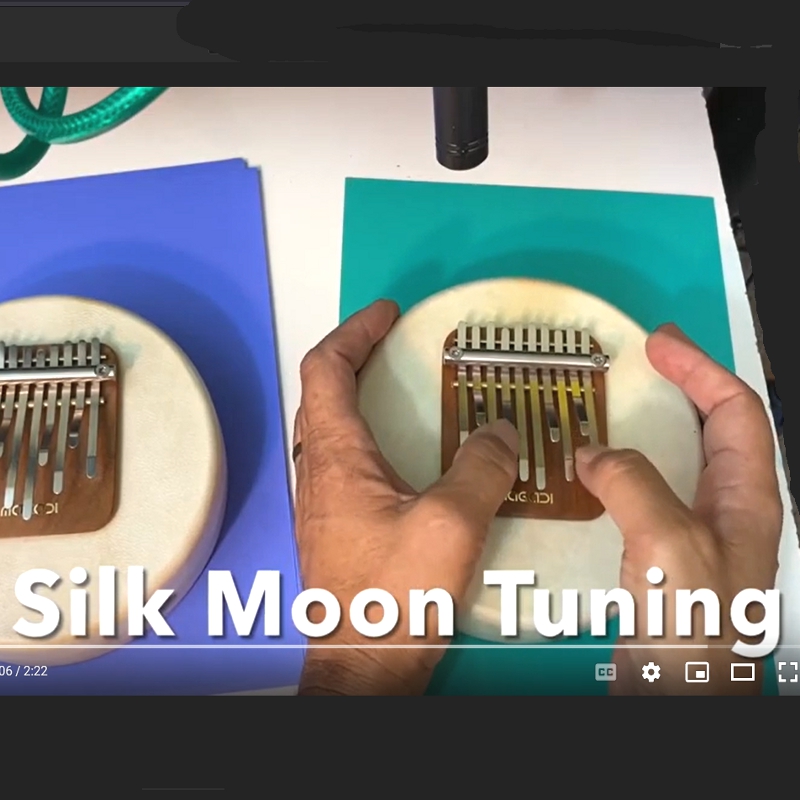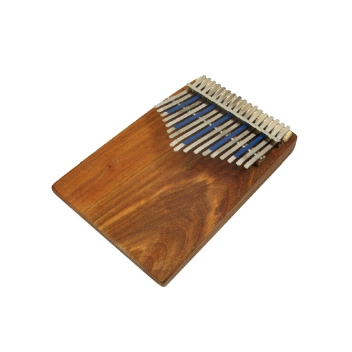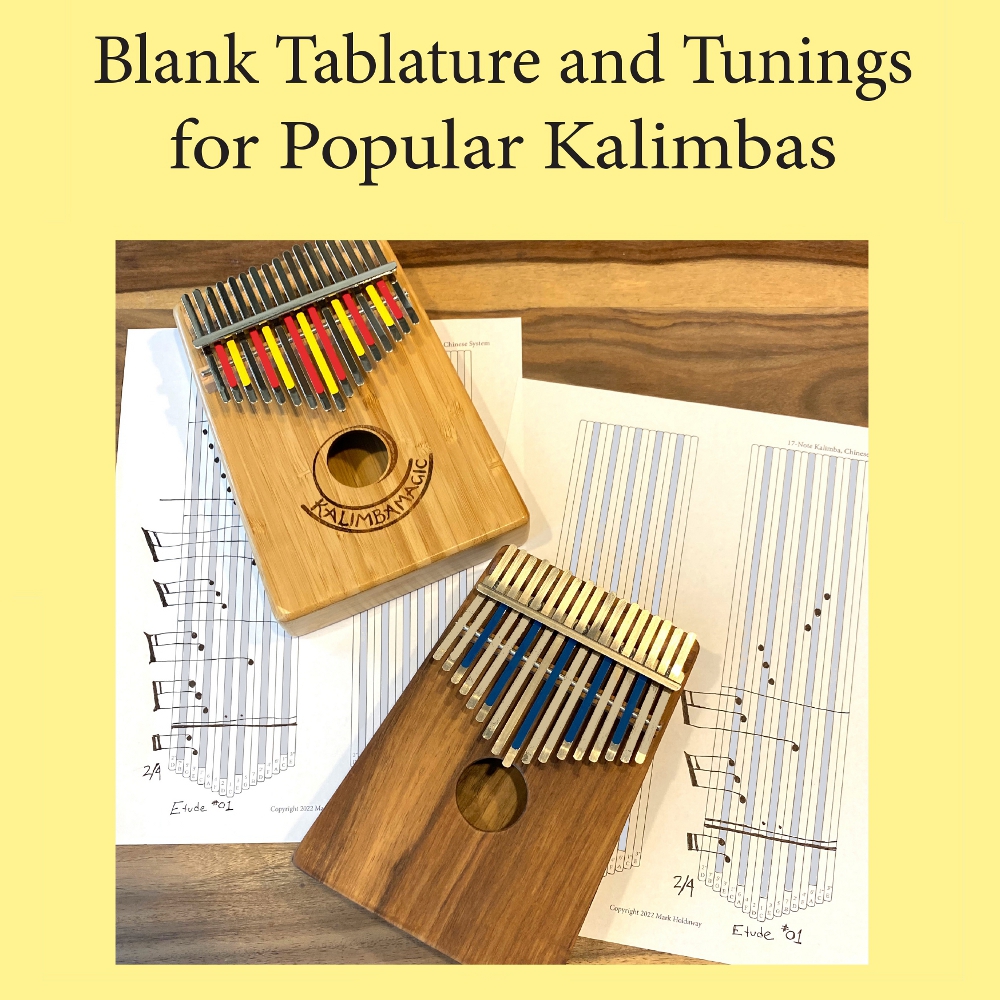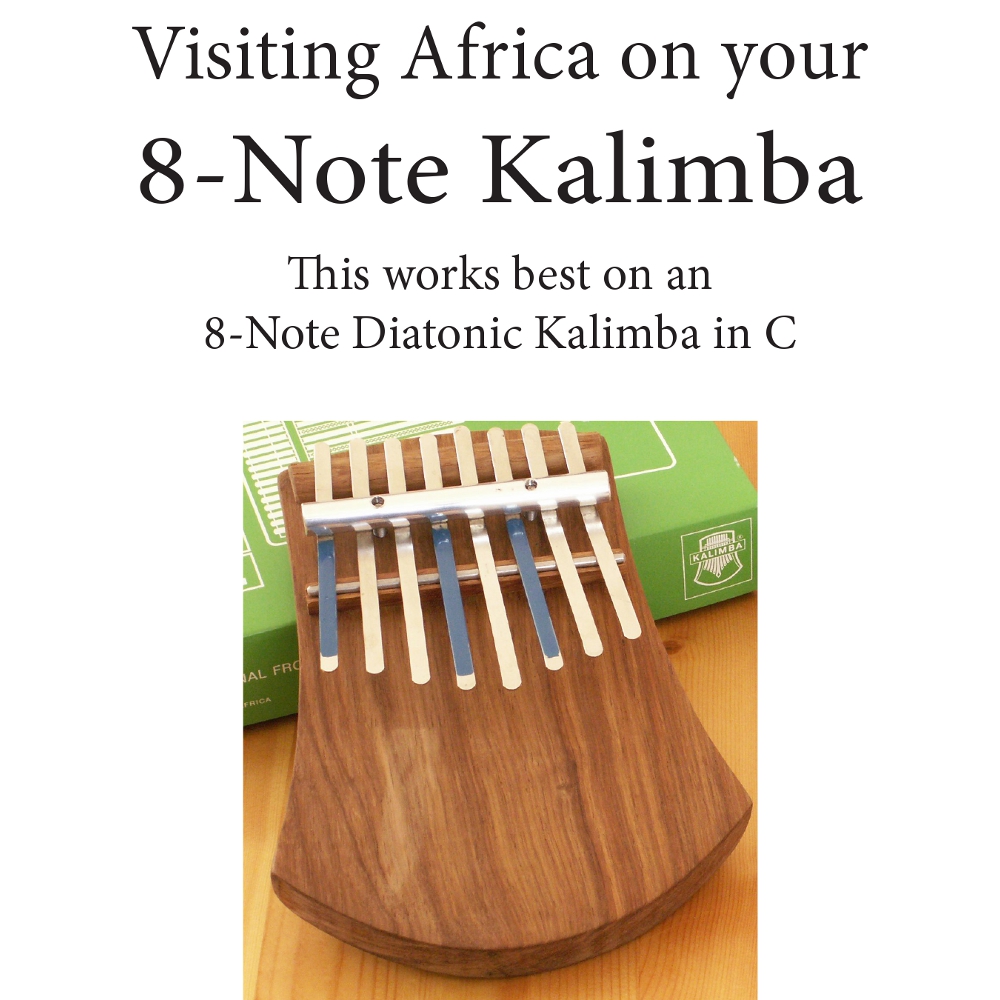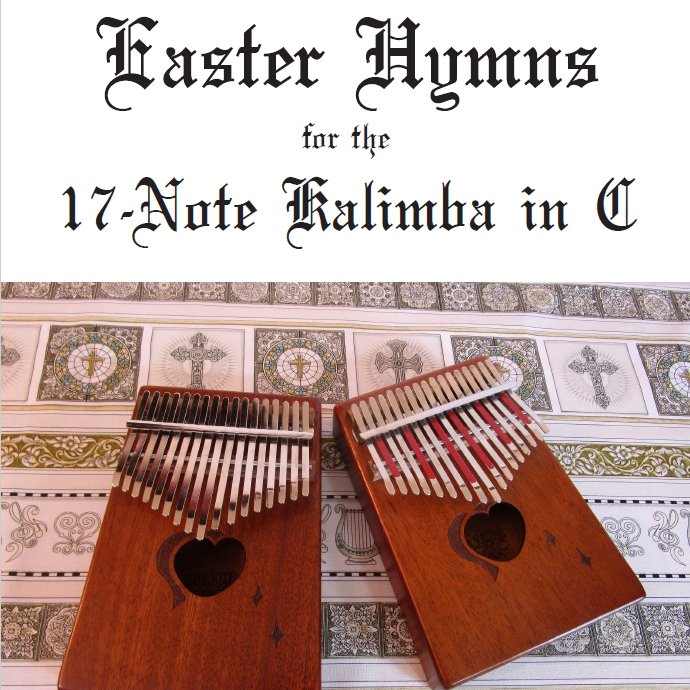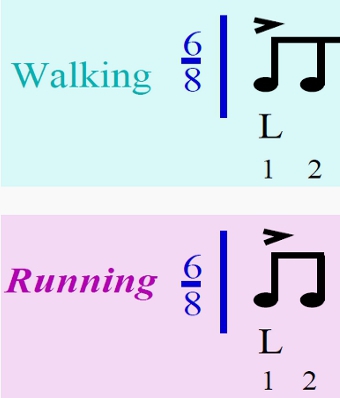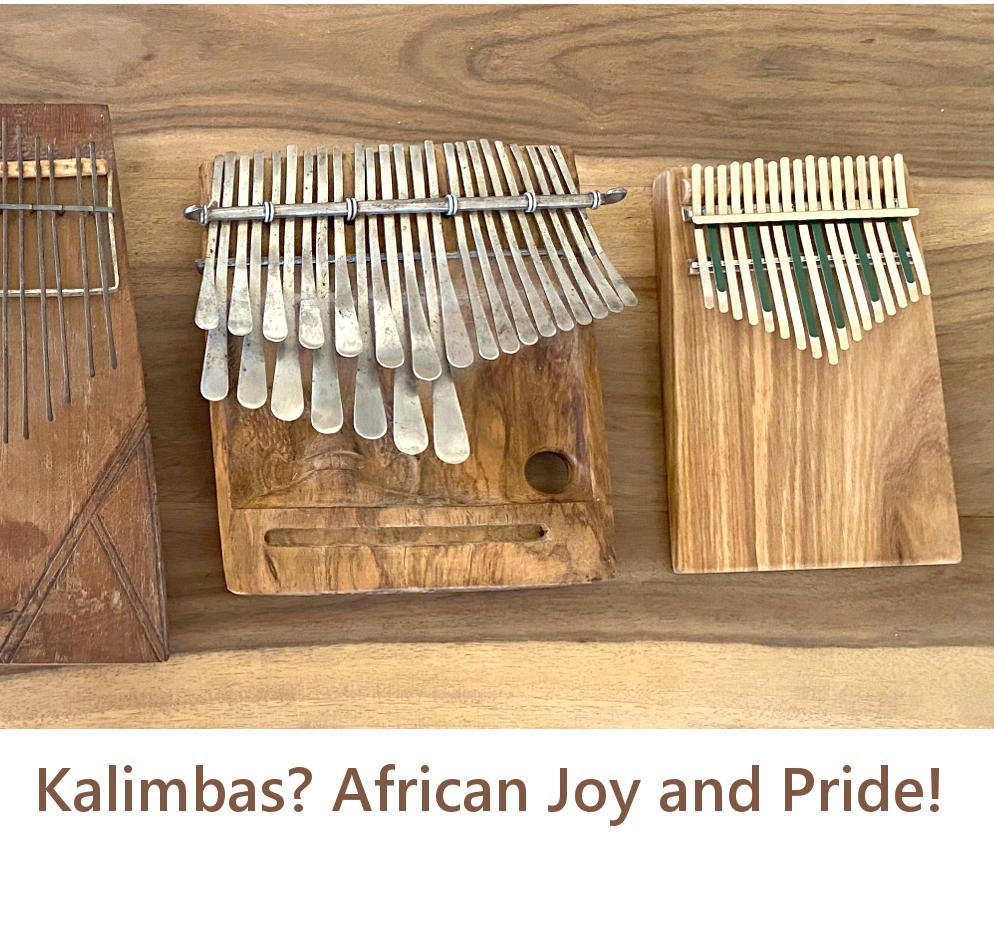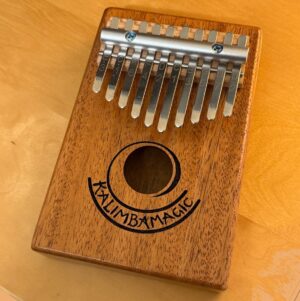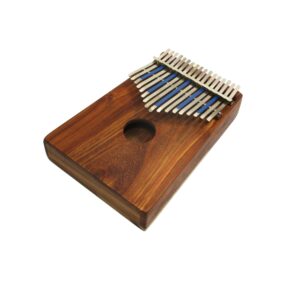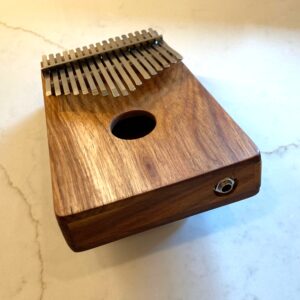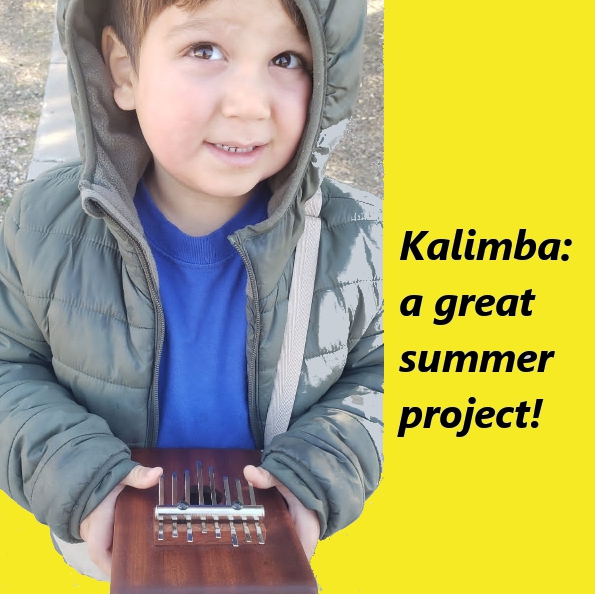
Kalimbas: Constructive, Educational Summer Fun for Kids 6 and Up!
This summer, instead of letting your kid’s cell phone instruct them in the way of video games… maybe it is time for your kid to get a kalimba and begin their kalimba journey? Playing kalimba exposes your child to new cultural and musical ideas. Playing kalimba promotes independence, as your kid goes off and figures it out. Playing kalimba calms your kid down, as they focus in on this sweet little musical instrument. Playing kalimba is good for the brain, promoting right – left collaboration and hemispheric balance. My rule of thumb for kalimbas and kids is: one tine per year of age. There is a lot of slush in
